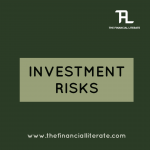
When investing, it is important that you know how much risk you are willing to take.
Simply put, investment risk is the possibility of losses (returns or capital) in any investment decision you make.
The rule says the higher the risk, the higher the return, as a high return compensates an investor for taking high risks. The rule also applies vice-versa, the lower the risk, the lower the returns.
This post will help you identify the risks attached to each investment class as well as how to determine the appropriate risks you should take in your investment decision.
“Taking too little investment risk may not give you the best out of your money and taking too much risk may make you lose more money than you can afford to.”
- Let’s start with knowing your attitude to risk. Some people naturally have a daring attitude; they are not afraid of taking risks, to stand the chance to gain higher returns. While this is not bad, there is just the need to curtail it, being too high risk-averse can cause you to lose money.
While for some, their past investment experience or that of close/loved ones affects their risk attitude. They begin to see all investment with that lens. If you fall into this category, you should consciously detach yourself from this attitude else you won’t get the best out of your money. While investments are not risk-free, they can be managed.
A yet another category is those who are motivated by greed. They want to double their money over-night. Investment is a journey, not a quick-rich scheme.
- To add to knowing your risk attitude, your age and level of responsibility also influence the amount of risks you should take. Young people can afford to take up more risks than elderly folks.
- The next step is to identify your time horizon. This boils down to clearly stating your investment goals and their target dates. Once you have clearly stated out your investment goals, time horizon and liquidity should influence the level of risks you should take. If you are investing short-term, it is wise not to take up much risk- this way you can get access to your money when you need it.
If you are investing long-term, you can afford to take much risk, such as the stock market, your money has time to recover from losses after a fall in the stock market.
- The next process is to understand the risk profiles of investment options available
- Shares are the most risky, very volatile. They fall and rise in value frequently. They are good for those with long time horizon
- Property are less risky than shares but more risky than term deposits. They are also not very liquid.
- Fixed interest- Investments with fixed interest rates are less risky. They offer a stable return.
- Finally, spread the risk. This is called Diversification. Do not put all your eggs in one basket.
Different asset classes tend to perform better at different times, so it’s possible to reduce volatility by investing within different asset classes.
When diversifying, also note this:
- If your risk tolerance level is low- the money market is ideal for you.
- If your risk tolerance level is moderate- have a mix of both high and low risk assets.
- If your risk tolerance level is high- the stock market is ideal for you.
We believe in you!
To your financial independence and freedom.

